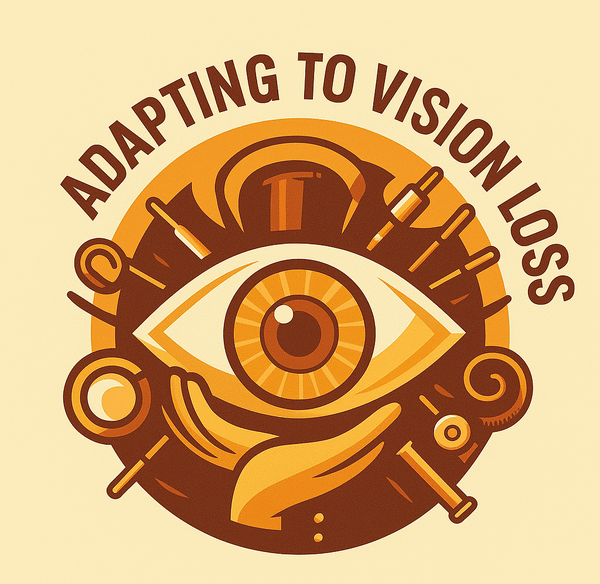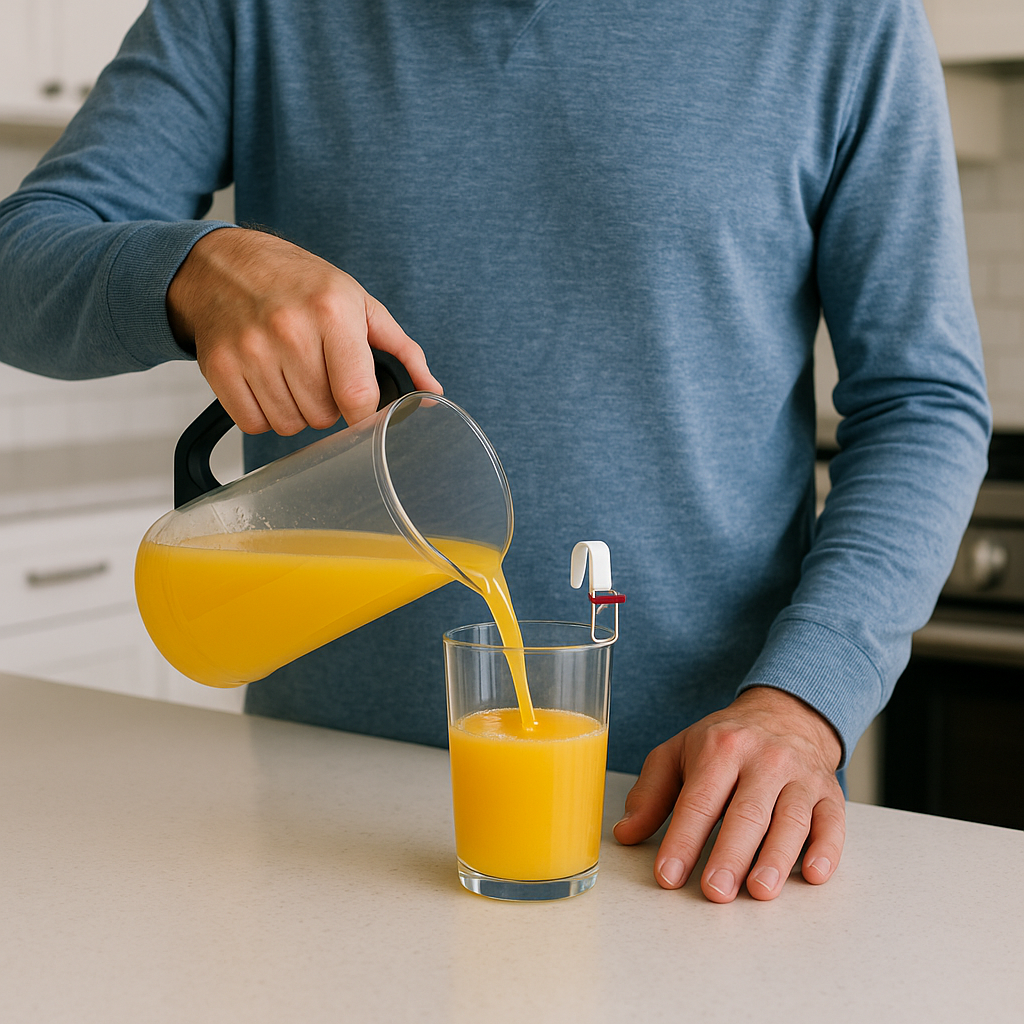Practical tips and tools that make everyday pouring a little easier — especially for those of us with low vision.
Pouring liquids into a glass or cup is one of those things that used to be automatic for me—until my vision changed. I never thought it was even worth discussing, but that changed when I saw a simple question in a low-vision Facebook group:
“How do you pour into a cup without spilling?”
The response thread exploded. People shared dozens of clever ideas—some I’d been using for years without realizing it, and others I’d never thought to try.
The more I read, the more I realized this wasn’t just a small issue. Pouring is something we all do every day, and finding ways of pouring liquids without spilling, safely and confidently can make a huge difference in independence.
I decided to test a few gadgets that promised to make pouring easier—specifically milk jug spouts and bottle pumps. They sounded like a great idea, but as I discovered, not every solution that sounds good on paper actually works in real life.
So in this article, I’ll share what actually works—based on real experiences, group discussions, and a few lessons I’ve learned the hard way.
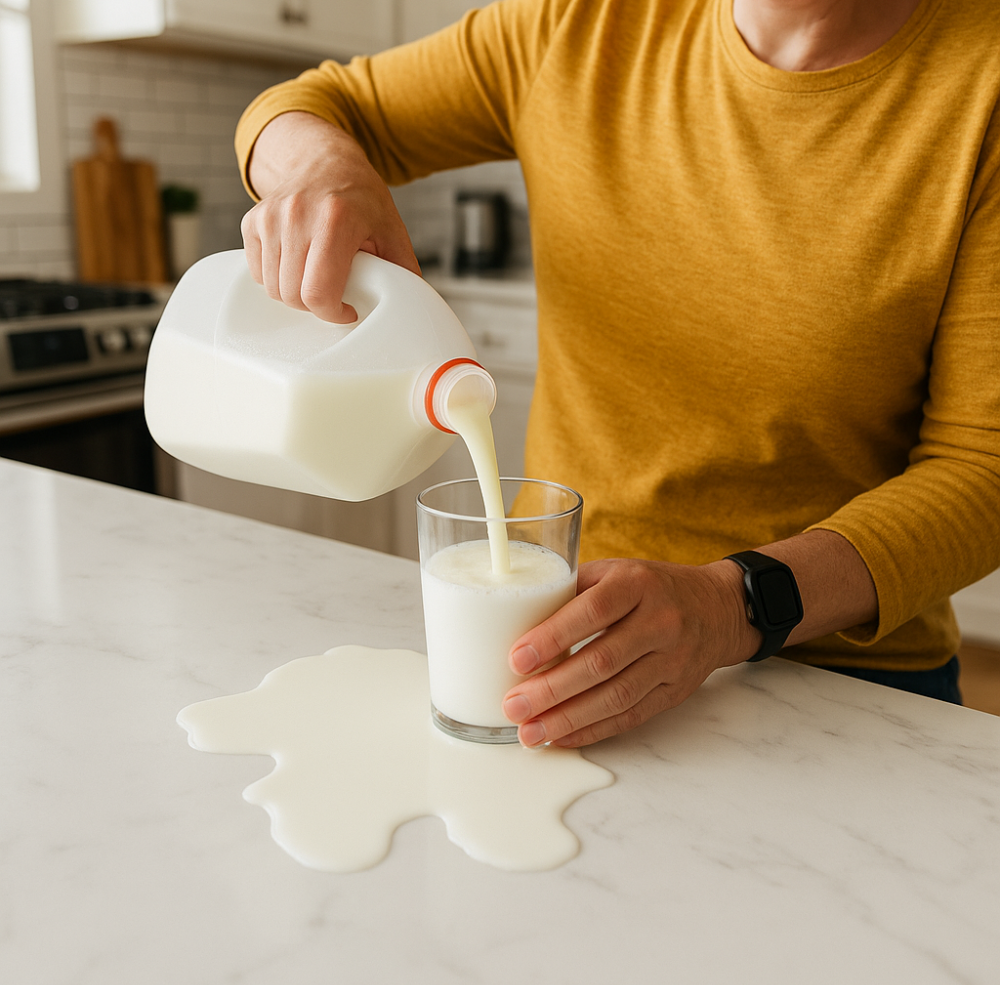 Pouring liquids into a glass without spilling can be a challenge with low vision
Pouring liquids into a glass without spilling can be a challenge with low vision
👐 Real-Life Techniques That Really Work
When I asked others how they pour safely, the responses were both practical and creative. Here are some of the most common—and effective—methods people use:
🔊 Listening to the sound
One reader uses an aluminum mug because it echoes slightly, making it easier to hear when the cup is nearly full. The pitch changes as liquid rises—a surprisingly effective cue once you train your ear.
☝️ The fingertip method
This one’s classic: rest a fingertip just inside the rim of the glass and stop pouring when you feel the liquid touch. It’s simple and reliable—just not for hot coffee!
👆 Tapping the spout to the rim
This is one of my favorites from the group. By lightly tapping the jug’s spout against the rim before you pour, you’re sure you’re lined up correctly and won’t miss the cup entirely.
🧺 Pouring over a tray or sink
It sounds basic, but it’s brilliant. Spills happen to everyone, so pouring over a tray or sink makes cleanup stress-free.
⏱ Counting or timing
One reader shared that she learned to “count ounces.” For an eight-ounce glass, she counts slowly to eight. It takes practice but gives surprisingly consistent results.
⚖️ Balancing the jug on the rim
This tactile method works well for heavier containers. Rest the jug lightly on the rim and pour slowly—when the balance shifts, you know the glass is nearly full.
🎣 The fishing bobber trick
One of the most creative ideas came from someone who drops a small fishing bobber into the cup. When it bumps your finger, it’s time to stop.
😂 Keeping your sense of humor
As one group member put it: “We all spill sometimes. You’ve just got to laugh and keep going.” I couldn’t agree more. Humor might just be the best adaptive skill of all.
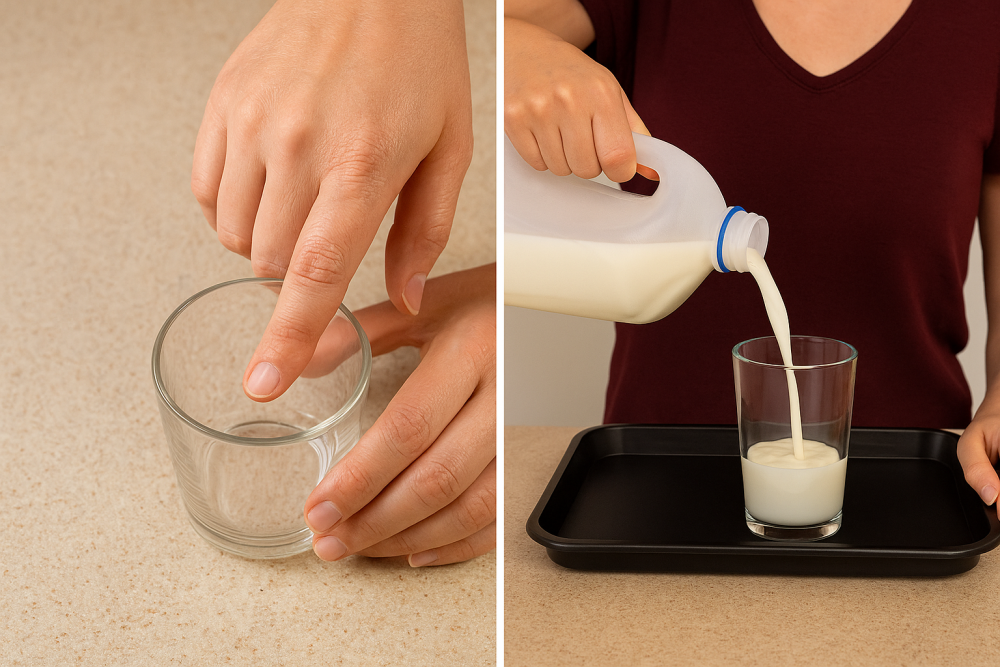 Two simple approaches that reduce spills — feeling for the liquid with a fingertip or pouring over a tray for easy cleanup.
Two simple approaches that reduce spills — feeling for the liquid with a fingertip or pouring over a tray for easy cleanup.
🧠 My Own Adjustments Over Time
Like many of the people in that discussion, I’ve developed my own habits without even realizing it. I usually pour over the sink or a towel, and I hold the container close to the rim before I tilt. I’ve learned to listen for the change in sound—and yes, I’ve had my share of spills along the way.
After reading everyone’s tips, I tried a few new ones—like counting seconds while I pour or tapping the container to the rim first. Both worked better than I expected once I slowed down and focused.
Then I tried a few gadgets people mentioned. I tested both the silicone milk jug spouts and the bottle pumps that claim to make pouring easier. Neither worked for me.
- The spouts simply didn’t fit my gallon jugs, no matter how hard I tried.
- The pumps wouldn’t screw down tightly enough and popped up every time I pressed them.
Reading product reviews later, I found I wasn’t alone. The spouts got mostly positive comments but seemed to work better with glass bottles or smaller containers. The pumps, on the other hand, earned high ratings from people using them for soap or detergent, but far fewer success stories for milk or juice.
That told me something important: the problem isn’t always the product—it’s the mismatch between the gadget and how we actually use it.
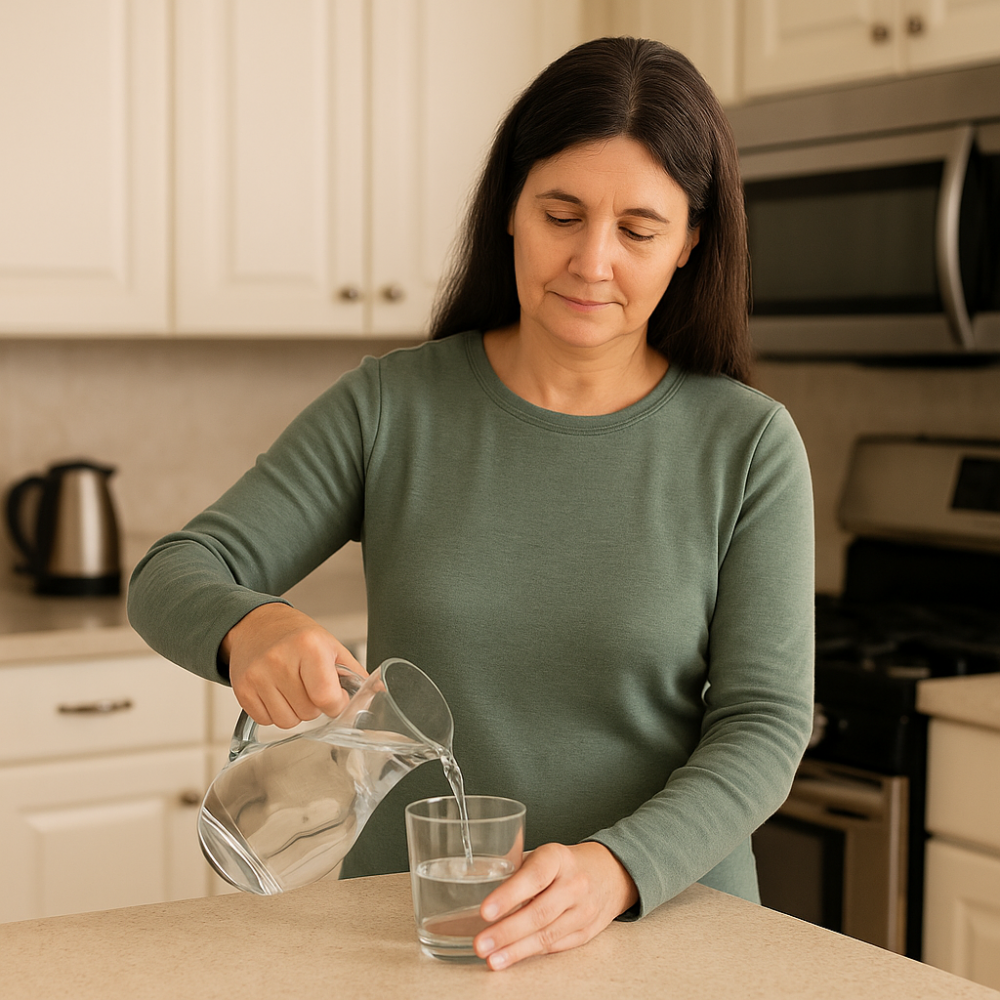 Over time, I’ve learned to slow down, stay steady, and trust the small habits that make daily tasks easier.
Over time, I’ve learned to slow down, stay steady, and trust the small habits that make daily tasks easier.
🧰 Helpful Tools and Workarounds
Even if my first experiments didn’t pan out, there are still tools worth trying—especially when chosen carefully:
- Funnels — simple, inexpensive, and reliable for transferring liquids between containers.
- Spouted measuring cups or pitchers — designed for control, not just capacity.
- Liquid-level indicators — beep or vibrate when liquid nears the top; useful, though this article focuses more on avoiding spills than measuring fills.
- Trays and washable mats — great for containing accidents while you experiment.
- Non-slip pads — keep cups stable on smooth countertops.
These may not sound fancy, but the goal isn’t to find the perfect gadget—it’s to make your routine less stressful and more predictable.
💡 Want to See How Some of These Tools Performed in Real Life?
Before you buy, take a look at my hands-on tests with popular pouring gadgets — including milk spouts and bottle pumps — to find out which ones actually worked (and which didn’t).
👉 Read “My Test: Do Pouring Spouts and Pumps Really Help?”
🌟 What I’ve Learned
What I’ve learned through all this testing and community feedback is simple: living well with low vision isn’t about buying the right product—it’s about discovering what truly fits your needs.
Some of the best “solutions” come from the lived experience of people who face the same challenges every day.
The Facebook discussions reminded me that there’s no single right way to adapt—there are just creative ways to make life easier.
Sometimes the answer isn’t a new tool at all. Sometimes, it’s just slowing down, listening for the sound of the pour, or laughing when things don’t go quite as planned.
